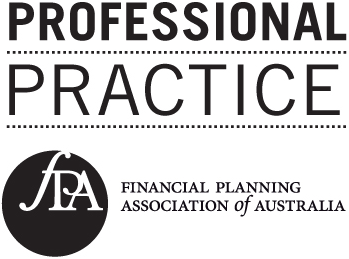JobKeeper extension – changes implemented
The legislative instrument implementing the changes to the JobKeeper scheme over the extended period was registered on 15 September 2020.

In brief
- The legislative instrument implementing the Government’s changes to the JobKeeper scheme was registered on 15 September 2020
- Entities are now required to reassess their decline in turnover over two set periods
- There are two tier payment rates for JobKeeper based on an 80 hour work/actively engaged test over a specified 28-day period
The extension of JobKeeper applies to qualifying entities in respect of their eligible employees and business participants. The changes in the Rules build more flexibility into the JobKeeper scheme recognising that circumstances can change quickly. Thus, there is the requirement to reassess an entity's actual decline in turnover for two set periods and a two-tiered payment based on hours of work or engagement.
Nevertheless, the changes do not affect any entitlements payable under the original JobKeeper scheme prior to 27 September 2020. Similarly, the changes to do not provide the opportunity for entities to change any elections they have previously made under the JobKeeper scheme.
Reassessing decline in turnover
For an entity to continue to receive the JobKeeper payments over the extended period, the entity must satisfy the actual decline in turnover test (section 8B of the Rules):
- if the JobKeeper fortnight begins before 4 January 2021 – the test must be satisfied for the quarter ending on 30 September 2020
- if the JobKeeper fortnight begins from 4 January 2021 onwards – the test must be satisfied for the quarter ending 31 December 2020.
This mean entities on JobKeeper do not have to satisfy the actual decline in turnover test for both the September quarter and December quarter to be able to receive payments for the JobKeeper fortnights beginning 4 January 2021. Furthermore, according to the explanatory statement to the Rules, an entity that drops out of the JobKeeper scheme after 28 September 2020 and then requalifies in the next period, does not need to notify the Commissioner again that it elects to participate in the scheme.
Actual decline in turnover test
The actual decline in turnover test applies the same thresholds for the original decline in turnover test (i.e. the percentage decline for the quarter must be equal to or greater than 30% for entities with $1 billion or less aggregated turnover and 50% for entities with over $1 billion aggregated turnover) but uses current GST turnover rather than projected GST turnover. According to the explanatory statement, it does not matter for the purposes of the new test whether the entity was required to use a different percentage in applying the original decline in turnover test at an earlier time (e.g. because it applied the original test in the previous income year).
Entities can still use the Commissioner's alternative decline in turnover test (for specified situations where using the 2019 period as a comparison is not appropriate) and the modified decline in turnover test (for group structures with employer entities) in assessing whether they qualify for the JobKeeper scheme – current GST turnover is to be used in place of the projected GST turnover.
New participants
Entities that have not previously participated in the JobKeeper scheme are required to satisfy both the original decline in turnover test and the new decline in turnover test. However, the Rules have modified the original decline in turnover test to give entities the choice to compare the 'projected GST turnover' of:
- a calendar month that ends after 30 September 2020 and before 1 January 2021, or
- the quarter ending 31 December 2020
with a relevant comparison period.
This extension of the testing period ensures that JobKeeper can still be accessed by entities that first experience a significant decline in turnover during the December quarter.
Two tiered payment rate
The Rules sets out two tiers of payment rates for eligible employees and business participants which have not changed from the Government's announcement. To recap:
- Higher rate:
- 28/9/2020 – 3/1/2021 - $1,200
- 4/1/2021 – 28/3/2021 - $1,000
- Lower rate:
- 28/9/2020 – 3/1/2021 - $750
- 4/1/2021 – 28/3/2021 - $650.
However, whether an individual is eligible for the higher rate depends on whether the individual worked or was actively engaged for 80 hours or more for a reference period. Otherwise, the individual is eligible for the lower rate.
Reference period means for (section 4A):
- an eligible employee – 28-day period at the end of the most recent pay cycle for the employee that ended before 1 March 2020 or 1 July 2020
- the eligible business participant – the month of February 2020
Entities applying the 80 hour test for:
- Eligible employees – take into account hours of work, paid leave and paid public holidays
- Eligible business participant – work out the time spent 'actively engaged in the business' and the individual must provide:
- a written declaration (approved form) to the entity to confirm the 80 hours
- if the entity is a sole trader, a notification via the business monthly declaration
If the standard reference period is not suitable, the Commissioner has made a determination, to provide an alternative reference period for the 80 hour test for particular employees.
Employers already on JobKeeper and are eligible for the first extension period can notify the ATO whether their eligible employees are on the higher rate or lower rate in their business monthly declaration in November 2020.
The ATO has allowed employers until 31 October 2020 to meet the wage condition for all employees on JobKeeper for JobKeeper fortnights starting on 28 September and 12 October 2020.
PlannerWeb
Latest eNewsletters
Hot Issues
- AI exuberance: Economic upside, stock market downside
- Becoming a member of an SMSF is easy, but there are other things that need to be considered
- Investment and economic outlook, November 2025
- Move assets before death to avoid tax implications
- ATO issues warning about super schemes
- 12 financial tips for the festive season and year ahead
- Birth date impacts bring-forward NCCs
- Countries with the largest collection or eucalyptus trees
- How to budget using the envelope method
- Accountants united in support for changes
- Investment and economic outlook, October 2025
- Stress-test SMSF in preparation for Div 296
- Determining what is an in-house asset can help determine investment strategy
- Beware pushy sales tactics targeting your super
- Call for SMSF ‘nudge’ in DBFO package
- How Many Countries Divided From The Largest Empire throughout history
- How changes to deeming rates could affect your pension payments
- Five building blocks that could lead to a more confident retirement
- Investment and economic outlook, September 2025
- Caution needed if moving assets to children
- Evolution of ‘ageless workers’ sees retirement age rise
- Younger Australians expect more for their retirement
- New NALE guidance still has issues
- Airplane Fuel Consumption Per Minute


